
|   |

|   |
 e-mail: sunilkothari1933@gmail.com Scenes from Ramayana and Mahabharata October 4, 2017 Sita Ram Parinay Photos: Avinash Pasricha Bharati Shivaji's institution Centre for Mohiniattam presented on second day of Mohiniattam Festival, 'Sita Ram Parinay' based on chaupais of Tulasidas's Ramcharitmanas at IIC Kamala Devi Complex auditorium on September 28, Delhi. A bevy of Bharati's Mohiniattam disciples appeared in colourful costumes and typical coiffure on one side, filling up the stage, beginning with stuti in praise of Lord Ganesha. The chaupai was similar to Sanskrit shloka Mukam karoti vachalam, pangumullangayat girim - you bestow speech to who cannot speak and perform miracle by making lame cross the mountains. Vande Vani Vinayakam - bow to Ganapati - set the tone for the dance drama. Slide show 
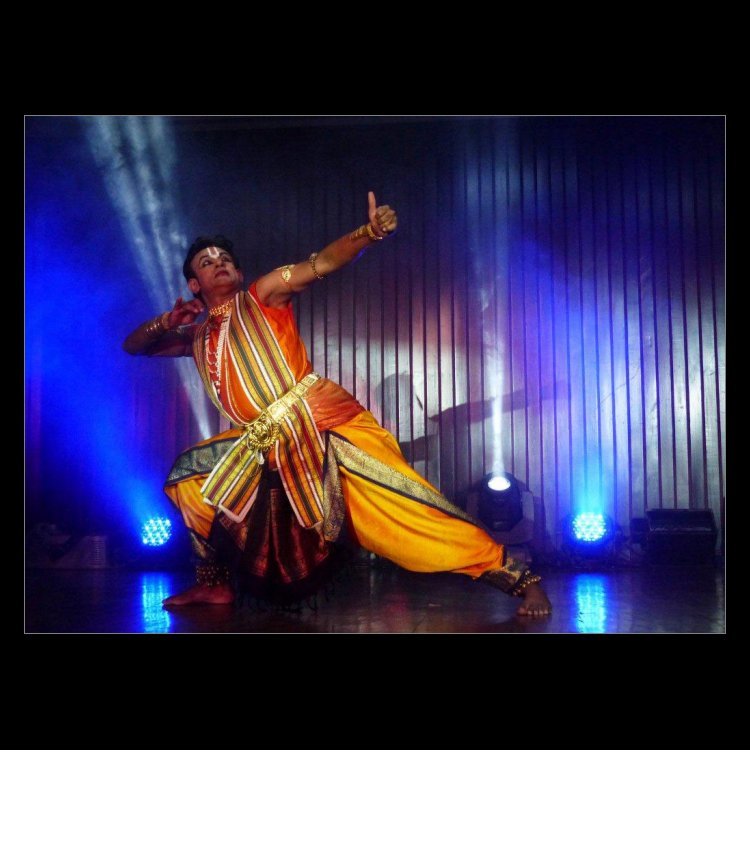
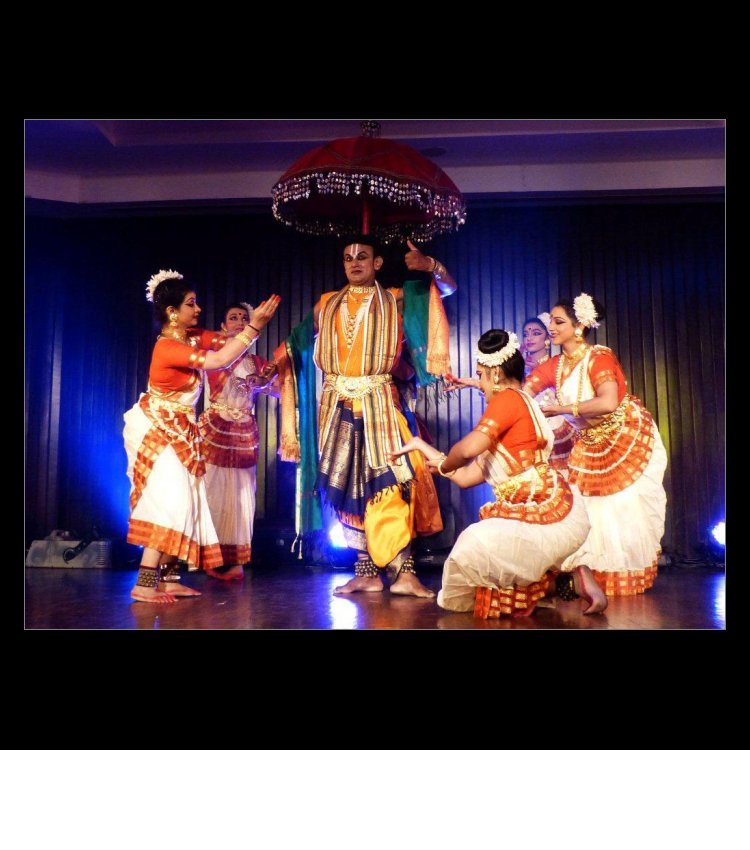
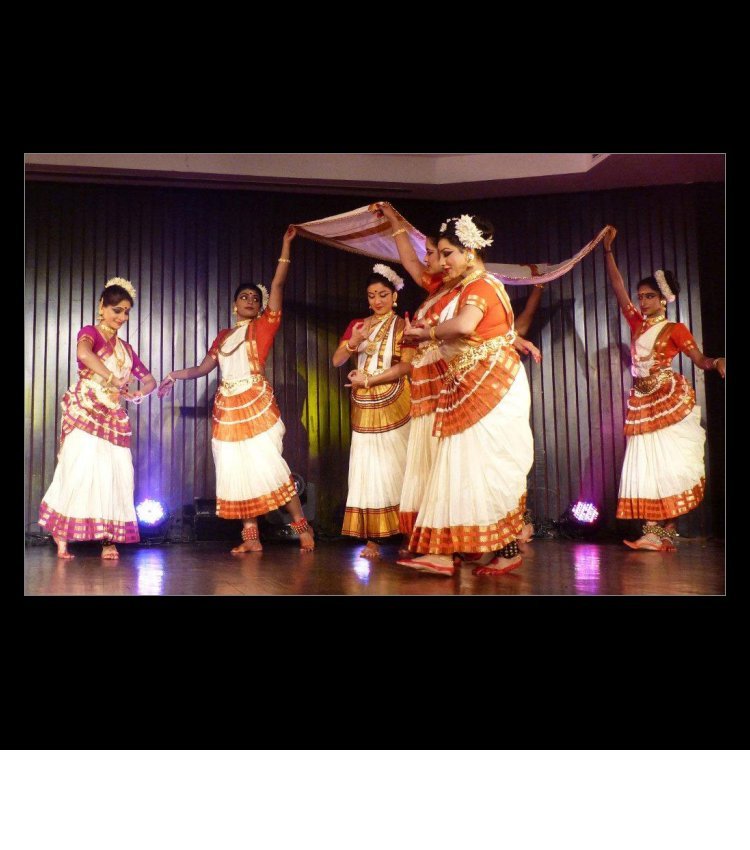
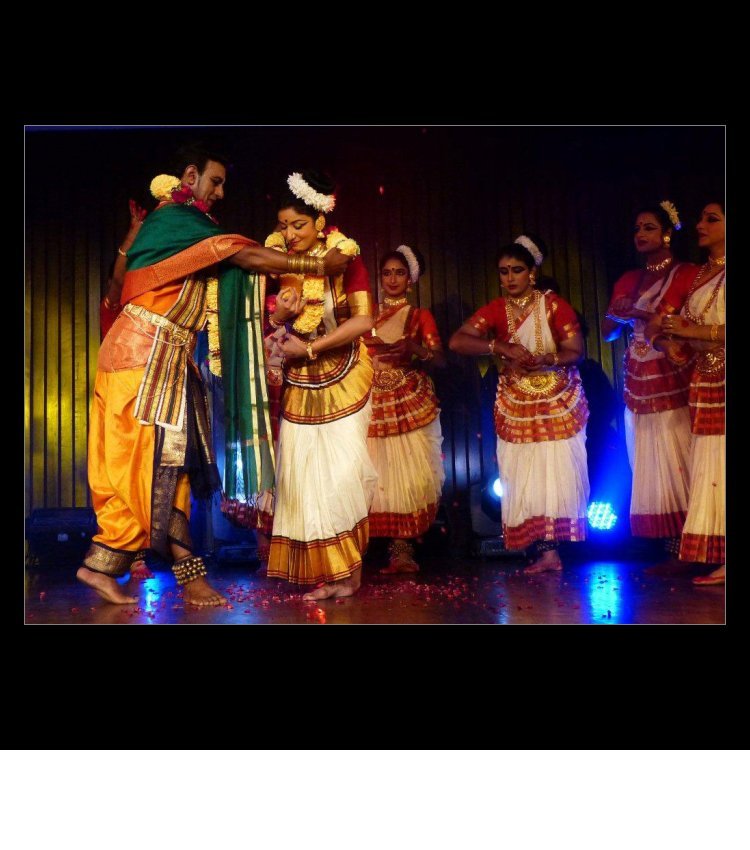
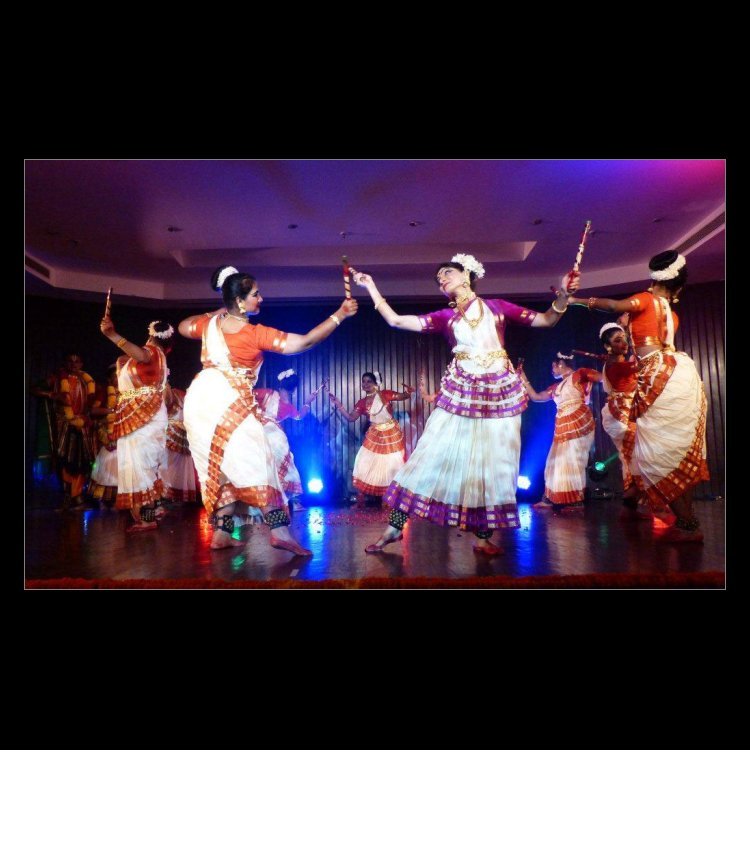
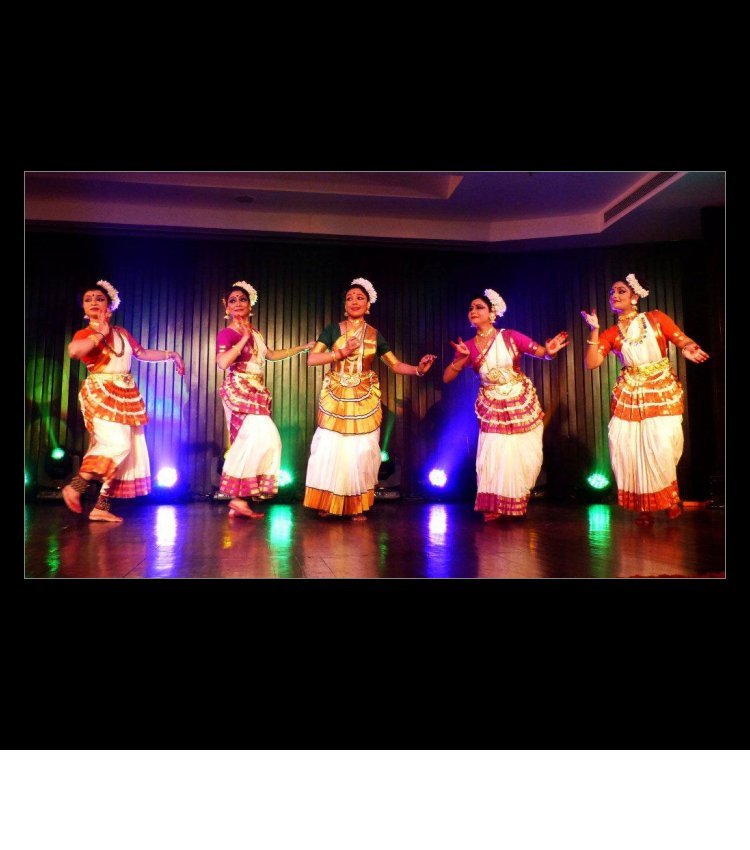
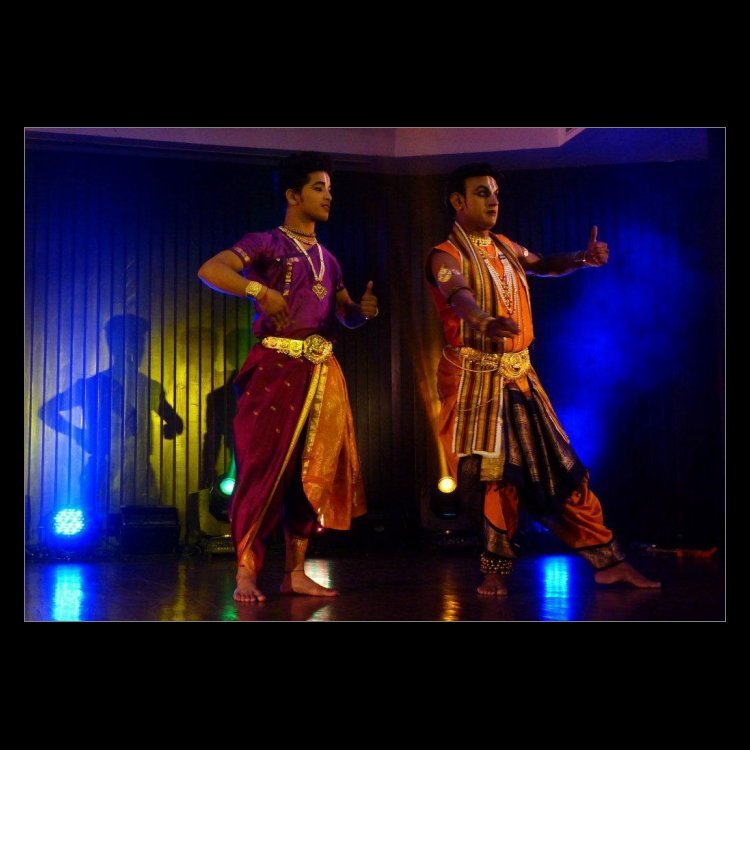
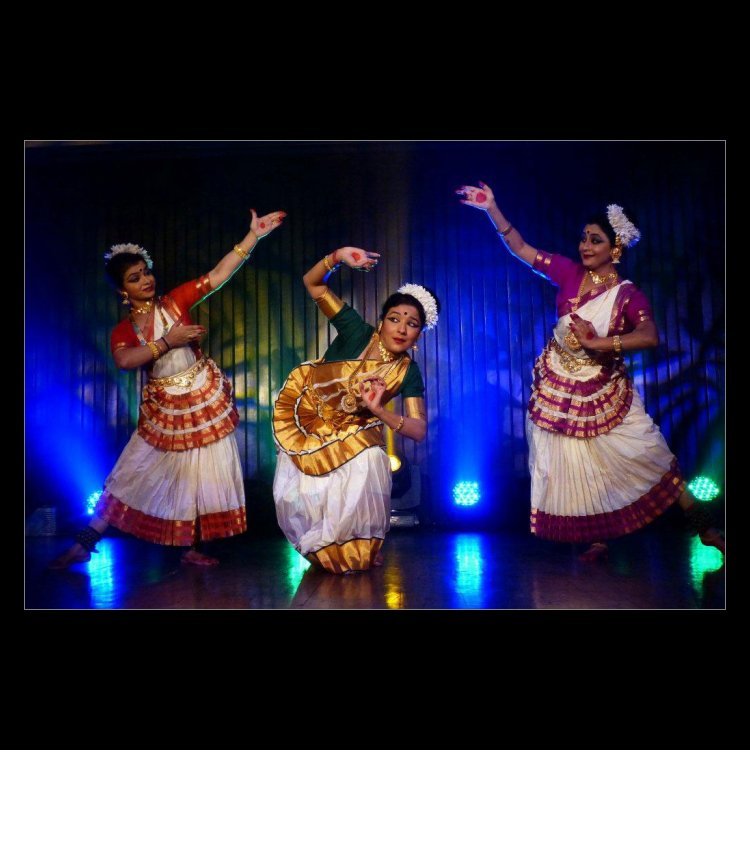
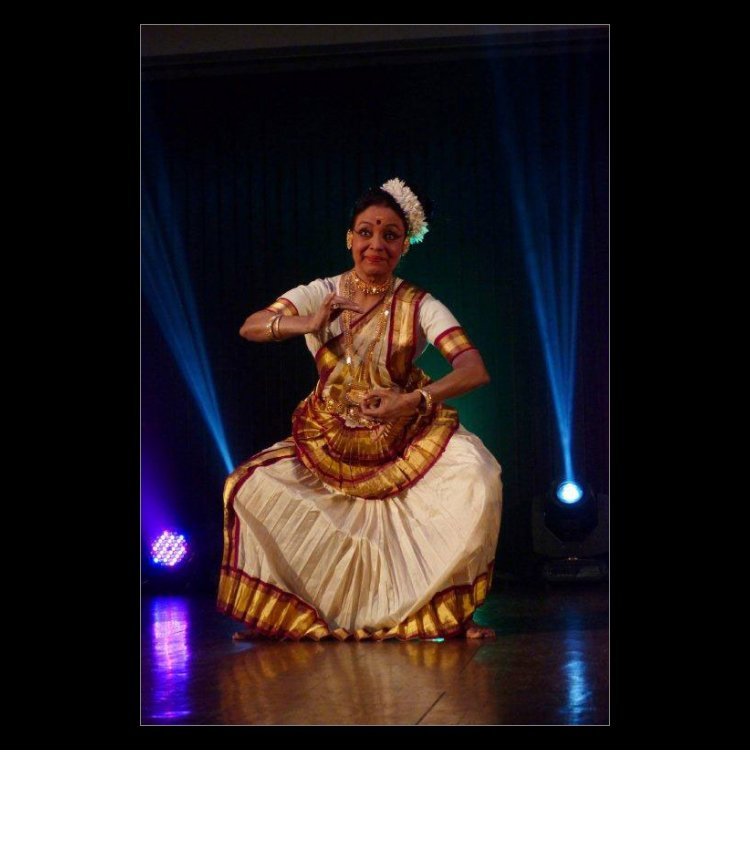
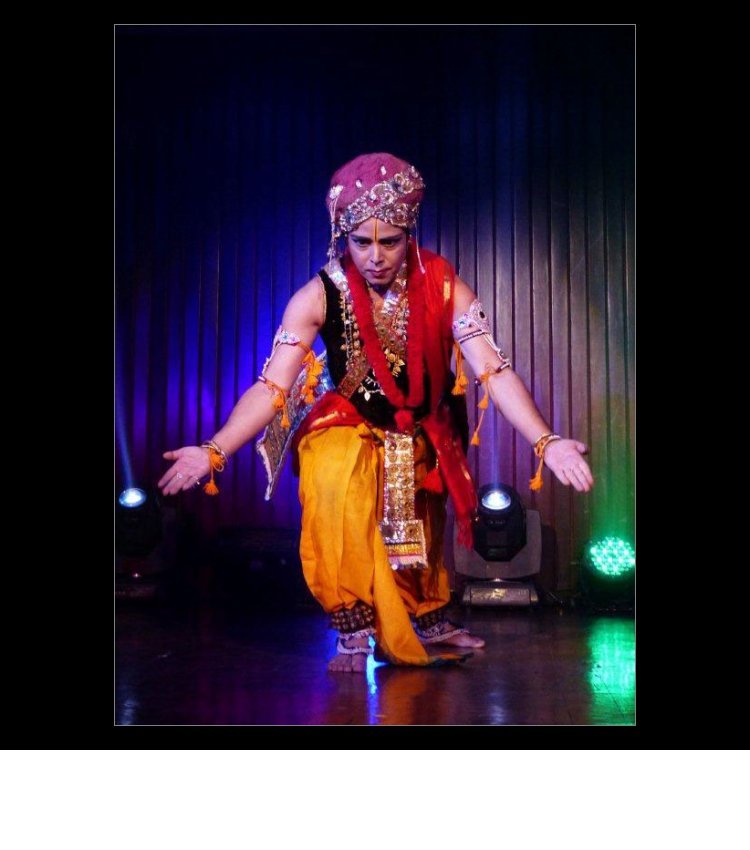
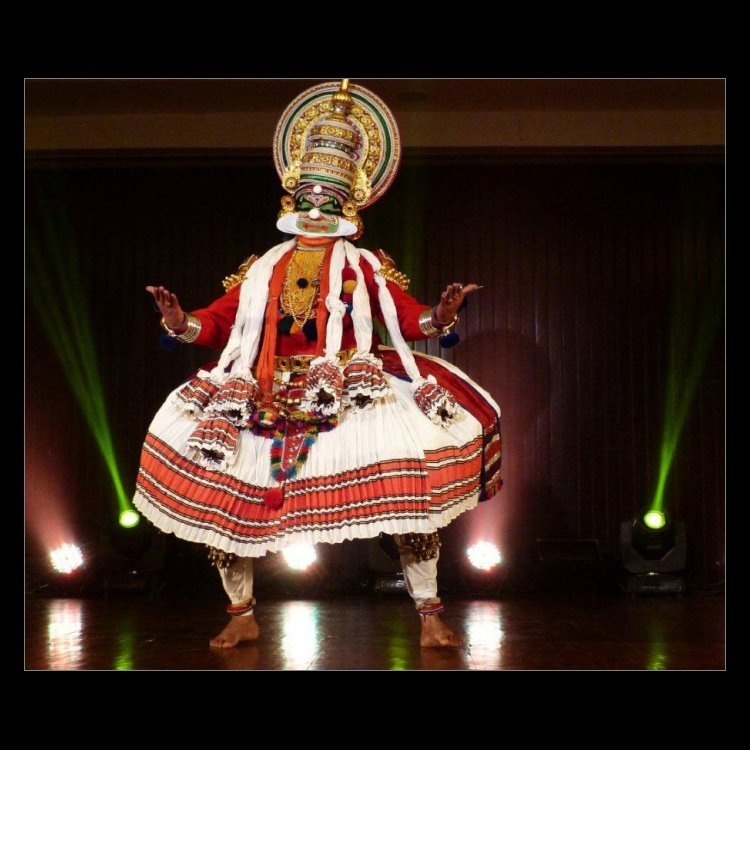
Bharati had selected apt chaupais for connecting sequences. The entry of Ram and Lakshmana, wandering in Janaka's garden, the poet describing the beauty of Ram comparing his matchless beauty as Nripa Hari, with most cherished stanza of Tulasidas, 'Bin nayana,nayan bin bani', the eyes which look and have no speech to describe his beauty, was captivating. Ram tells Lakshmana that while walking in the garden, he has been listening to nupurdhwani, the sound of anklets, so enchanting, 'Nupur dhwani suni, man hu man Madan dundubhi' - as it were Kamadeva is blowing his bugle; from where does this sound come from? The entry of Sita was imaginative. Surrounded by a bunch of sakhis, Sita in the centre enters the garden and sakhis move away revealing Sita. Sita is enjoying the beauty of the garden along with the sakhis, seeing dancing peacocks, swimming fish in water, birds flying and flowers blooming. When Ram enters the garden and sees Sita and Sita sees him, the most memorable stanza 'Siya mukh Shashi, Nayan chakora', the face of Sita like the moon and Ram's eyes like Chakor bird, evokes wonder! And before Sita's beauty even the effulgence of thousands of lamps pale into insignificance, Tulasidas sings with joy 'jab upama rahi juthari', that the simile appears fake! The sakhis see the complete enchantment of Sita and ask her to move on for puja to temple of Bhavani, and being led by sakhis, Sita's mesmerized look as it were asks, 'Kahan gaye Nripa Kishora' - where have the royal young men gone? To describe in dance Sita's beauty and effulgence, Bharati has used several dancers surrounding Sita holding lamps. That was an imaginative touch, but one wished the lighting was clever enough to let Sita's figure be carved out! Tulasidas further sings that Sita's eyes were still thirsty to see the two young handsome princes, one dark and the other fair: 'Lochan lalachaye, harase janu nija pahachane tana shyam aur gaura'. Bharati has used sutradhar's ploy to carry forward the narrative. After Sita and her sakhis complete the puja of Bhavani, Bharati enters and describes that so many kings have come for swayamvara of Sita, to win her by lifting the bow of Shiva. One who succeeds will marry Janakduhita, daughter of emperor Janaka. Sutradhar sings describing the attempts of various kings: 'Uthi in koti bhati bala karhu, Jin ke kachhu vichar man hi'. Thousands have assembled with might, thinking of winning Sita. Enter the valorous, proud of their strength, various kings one after another. Performing in Manipuri, with Manipuri regalia, Sanjib Bhattacharya, as one of the contestants, shows off his prowess by performing movements from pung cholom, drum dance, karatal cholom, of playing cymbals and taking aerial rounds and approaching the Shiva Dhanush, with right hand, then left hand and then with both hands and is unable to lift the bow, moves away ashamed before an assembly of kings. Follows Ravana in katti vesham in Kathakali, looking majestic with shining eyes and dismissing the rest of the present kings, full of power of his invincible strength, describing what he can do, but fails to lift the bow. Anil Kumar as Ravana looked a powerful emperor but surprisingly he did not enact abhinaya of lifting the bow! Young dancer Lokeshwar made excellent entry with his Mayurbhanj Chhau jump and acrobatic movements, with aerial movements covering the stage, displaying his energy in a breathless Chhau topkas and uflis, basic movements, winning rounds of applause for excellent technique, and disappeared in the wings, failing to lift the bow. Entered Dr S. Vasudevan as Ram, with dignity and bowing to the elders and offering salutations, lifted the bow and tied the string to shoot an arrow, succeeding in a trice. Says Tulasidas: 'Chamake damini din vadan mandal sam,' the face of Ram shines like lightning, and when the resounding sound of the bow filled the universe, 'asura muni sakal vichar' - the demons, the saints, the people all said 'Victory to Ram' who lifted Kodanda - 'Jayati vachan uchari.' The marriage scene was regal. Ram makes an entry with royal umbrella and attendants, from the audience, on to the stage. He is welcomed with scent, flowers and made to stand in one corner. From the other end enters Sita with her sakhis holding a canopy over her head. Ram and Sita are brought close to each other and Vijaylakshmi as Sita, offers garland to Ram who in turn garlands her. The auspicious music with sounds of conch, shehnai and drums, heralds their marriage. The scene was spectacular befitting the divine couple's wedding with tunes of 'lali songs' and chaupais, the sakhis dancing Kolattam with sticks like Raas and also clapping like in Garba. With joyous dancing the dance drama concluded. As the shloka from Balakandam of Valmiki Ramayana says: 'Yavat sthasyanti girayah saritascha mahitale, Tavad Ramayana Katha lokeshu pracharishyati' - As long as the mountains stay on the earth and the rivers flow, the story of Ram will continue to live among the people. The saying is so true. In whatever form the story of Ramayana unfolds, it touches the deep chords of the audience. Bharati's attempt to celebrate marriage of Rama and Sita using Mohiniattam form to the music for Tulasidas's Ramcharitmanas, set by Sujit Bose and arranged by Bharati, and with lights by Sharad Kulashreshtha, was successful. The attempt to bring Mohiniattam form closer to audiences in North India, familiar with Tulasidas's Ramcharitmanas, is praiseworthy. The popularity of the epic in exquisite chaupais, as a shared tradition, and enchanting dance form like Mohiniattam provided a visual treat. View on the Mahabharata Photos: Ashwin Chopra 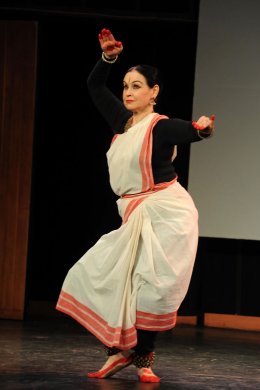 Radha Anjali For Lalitarpan Festival 2017 of dance and music, which Shovana Narayan arranges every year under the aegis of her dance institute Asavari, in memory of her mother, she had invited from Vienna the celebrated dancer and choreographer Radha Anjali (Angela) with her Natya Mandir Dance Company. Radha Anjali trained under Adyar K Lakshman and Kalanidhi Narayanan in Bharatanatyam in Chennai. She also learnt Kuchipudi and Seraikella Chhau under late Kama Dev. She trained in Kalaripayattu, martial art of Kerala. After her arangetram in Chennai in 1983, she established her institute in Vienna. Some of her students visited India and intensified their training in Chennai. She has several choreographic works to her credit and has presented Shikhandi, transgender dance drama based on mythological theme from Mahabharata for ICCR in India. The choreography of 'View on the Mahabharata' presented on Sept 21 at Stein Auditorium, is based on the Sanskrit verses of the Mahabharata and the interpretation of the characters and their experiences. Divided into six parts within duration of 45 minutes, Radha Anjali managed to convey the message: 'Will we ever learn from the painful experiences of history?' Choreographed by Radha Anjali with Guru Adyar K Lakshman, reminding us of vintage Kalakshetra bani, the most appealing aspect of the production was its simplicity. There were no complicated jathis or hurried movements. In Kalakshetra practice costumes, simple white colour sarees, minus over decoration of ornaments, the characters looked transparent. The recorded music composition was by D. Pasupati with musical assistance by K.Rama Rao and Kadirvelu. The narration in English was by the renowned actor, pianist, singer Herbert Gnauer. After the narration of the beginning events of Mahabharata to the singing of Sanskrit shloka 'Narayanam namskritya', after offering salutations to Narayana addressing Vyasa, the writer of Mahabharata, the story of Santanu and Ganga placing the newborn children in water to release them from the curse, the dance follows to related to known episodes. Kauravas and Pandavas grow up and Duryodhana invites Yudhishthira for the game of dice in which Shakuni deceives Pandavas. The game of dice scene was performed in silence except the sound of dices thrown on floor, the dancers performing as five Pandavas wearing expressions of anger, misery, and helplessness. Minus over dramatic acting which we see often in Indian versions, the choreography of this sequence was most impressive. Draupadi being dragged into court and being humiliated but Lord Krishna saves her providing endless sarees which Dushasana finds it difficult to pull was also acted with restraint. The use of four dancers providing endless saree standing at the back was artistic. A clever ploy employed by the choreographer was of the visuals in which one sees contemporary references to game of dice. The roulette used for gambling, is shown as we see it in gambling houses of Las Vegas, the ornaments being collected when Yudhishthira loses, a young man is shown playing with dice, and before Draupadi is humiliated visuals of protest against rape of women, slogans against it are shown and a lone figure of a woman is shown in a helpless state. Radha Anjali succeeds by projecting visuals and images linking them with images from ancient to present suggesting the atrocities committed on women. Similarly the projection of clippings of Second World War, of shower of bombs, destruction of cities as a result of war etc., was used imaginatively. 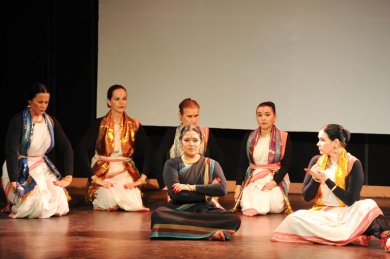 Game of Dice 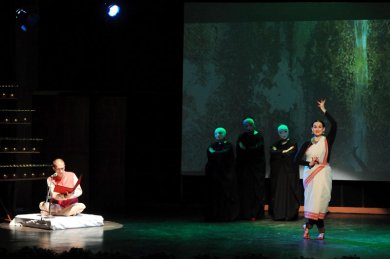 Yaksha Prashna The imaginative sequence is of Yaksha Prashna, when Yudhishthira sends Nakula for fetching water from a nearby pond. But Yama, the god of righteousness and death, asks questions which only Yudhishthira succeeds in answering and Yama revives the four dead brothers and gives boon to Pandavas that during their last year of banishment to forest, when they will serve in court of a king they will never be recognized. During the question, Seraikella masks are artistically used to hide Yama. On their return from exile, Duryodhana refuses to give them even a piece of land and the war ensues between Pandavas and Kauravas. Arjuna loses his heart and does not want to fight, when Krishna shows him his Vishwaroopa and tells him to do his duty and not to expect any rewards: 'Karmanyev adhikarastu, ma faleshu kadachana'. After the battle is won, the scenes of coronation are shown through excerpts of visuals. The finale of ascending Himalayas has a visual of a lonely dog moving to the top and Yudhishthira refuses to enter the gate of heaven without the dog, who was Dharma in guise of the dog. When Yudhishthira does not find his brothers in heaven and asks where they were, the visuals of hell are shown and because of Yudhishthira's righteous attitude all the four brothers are brought to heaven. The finale with Tillana in Brindavana Saranga reinforced Kalakshetra touch. Selection of Sanskrit shlokas was by Prof Dr. Ramaratnam and its English text editing was done by Ashmita Banerjee, one of the dancers. The Austrian dancers have taken Indian names like Rani (Candratara), Srinidhi (E.Schober), Parvati (B.Mayer) and Shakti (S.Oyrer), and they all danced with involvement. Narration by Herbert Gnauer was crystal clear. To pack in an original two hour production into 45 minutes was quite a challenge which Radha Anjali managed well. Due to non availability of technical facilities for projection of visuals with split second precision the gap of even 20 seconds often looked too long. But it could not be managed at Habitat Auditorium. Barring that, the show was engrossing from the beginning. 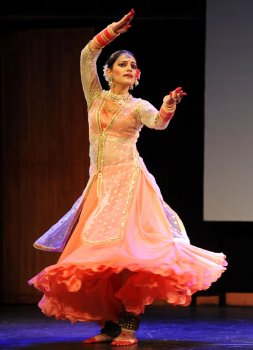 Sanchita Abrol 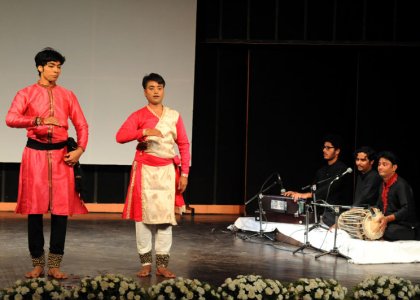 Gangani parivar The other artist was young Kathak dancer Sanchita Abrol whose presentation of Shwetaketu and his mother's plight could have been presented with more thinking to drive the message home. The refrain of Tamaso ma jyotir gamaya (lead me to light from darkness) was repeated with innumerable chakkars, pirouettes, and with parans, tode etc., the usual Kathak fare. Unfortunately, it did not help the production. For a tighter presentation, she needs to rethink the theme and improve it with the help of a mentor. The Ganganis are a legion. Their parivar - family members - are a part of the Kathak community. They pursue tabla, pakhavaj and Kathak dance. Shovana Narayan showcased the young and senior members as a part of Lalitarpan Fest.  Dr. Sunil Kothari is a dance historian, scholar, author and critic, Padma Shri awardee and fellow, Sangeet Natak Akademi. Dance Critics' Association, New York, has honoured him with Lifetime Achievement award. Post your comments Please provide your name and email id when you use the Anonymous profile in the blog to post a comment. All appropriate comments posted with name & email id in the blog will also be featured in the site.. |